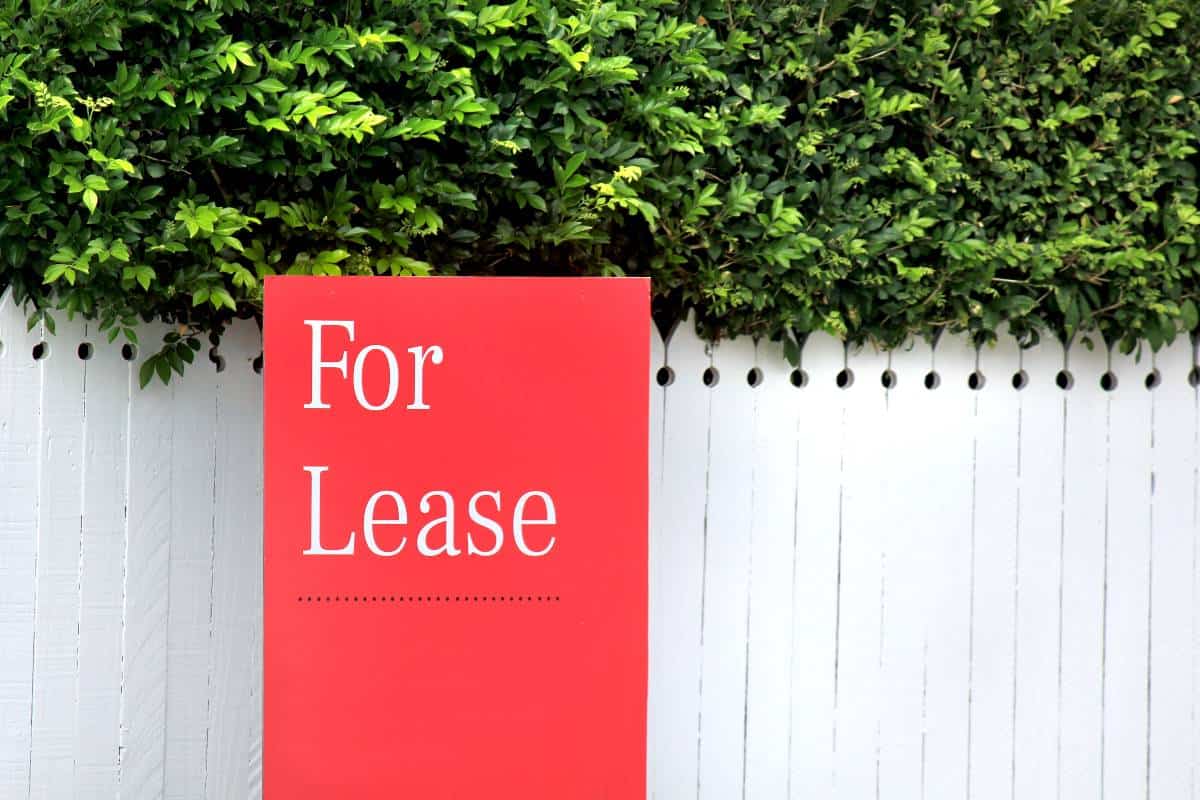Gaining a comprehensive grasp of the lease agreement, negotiating optimal terms like rent abatements and build-out allowances, and cultivating a collaborative landlord relationship are key to retail leasing success. Carefully scrutinize expenses associated with gross, net, and triple net leases. Work hand-in-hand with experienced brokers and legal counsel. Lastly, implement operational best practices regarding cost control, sales forecasting, and contingency planning.
Key Takeaways
- Carefully review the lease agreement and clarify any vague terms or responsibilities.
- Negotiate incentives like rent abatements, tenant improvement allowances, and rent-free periods to reduce costs.
- Clearly understand the differences between gross, net, and triple net leases and how they impact expenses.
Table of Contents
Tips To Negotiate a Commercial Lease
With over 18 years as a commercial real estate professional, I’ve negotiated hundreds of retail leases on behalf of business owners. The process of securing the optimal space with favorable lease terms profoundly impacts one’s ability to profitably operate the business. Although lease terms and negotiations can seem complex to first-timers, the following strategic retail lease tips for negotiating a commercial lease help stack the deck in your favor.
Absorb Lease Fundamentals
The lease agreement governs the entire landlord-tenant dynamic. Thus, business owners must thoroughly absorb its terminology and implications rather than breezing through the fine print. Heed sage advice from Benjamin Franklin, “An ounce of prevention is worth a pound of cure.”
Carefully examine aspects like:
Lease Duration
Balance your growth objectives with the financial commitments when negotiating the lease term, or length of occupancy. Short 1-2 year terms permit flexibility, while long 10+ year leases enable stable planning around business operations and investments. Also inquire about incorporating an early termination clause, allowing you to exit the lease if predetermined conditions are met.
Expense Structures in Retail Lease
Three typical expense structures exist in commercial leases: gross, net, and triple net. In a gross lease, base rent includes proportional operating expenses. Under a net lease, tenants handle base rent plus pre-defined operating expenses. Lastly, a triple net lease requires tenants to pay all property operation and maintenance costs.
Additional Charges in Commercial Retail
Aside from base rent, retail leases generally specify other expenses like common area maintenance (CAM) fees covering shared upkeep of spaces like lobbies, parking lots, and landscaping. Plus, determine who handles taxes, property insurance, and utility bills.
Key Clauses
Carefully digest the implications of clauses like exclusivity provisions limiting nearby competitors, co-tenancy terms protecting the business if an anchor retail store closes, and subletting or lease assignment guidelines managing transfers.

Forge Favorable Terms
Next comes one of the most valuable steps of the process – negotiating lease concessions to reduce costs. Skilled negotiation can tremendously benefit one’s bottom line. Renowned businessman Lee Iacocca put it best, “You can have brilliant ideas, but if you can’t get them across, your ideas won’t get you anywhere.”
Rent Rates
Thoroughly research average rents for comparable retail spaces in your target geographic area. Come armed with data to underpin requests for discounted base rent periods, the landlord may build out allowances, and capped future rent increases.
Kickstart Funding
Also, inquire about upfront landlord funding for elements like:
- Tenant improvements – Renovations and fixture purchases
- Free rent – 1-2 months of waived base rent payments
- Waived personal guarantees – No personal assets on the hook
Every bit of savings weakens start-up budget pressure.
Net vs. Gross Leases
In a gross lease, the landlord handles most property operating expenses, leading to higher but more predictable base rents for tenants. Under a net lease, tenants pay pre-defined maintenance, insurance, tax, or other fees, reducing base rent liability. Carefully calculate total occupancy costs under different scenarios.
Triple Net Implications
A triple net lease is the most expensive base rent option but transfers all operating expenses to the tenant such as utilities, taxes, CAM fees, insurance, and maintenance costs. While the base rate seems appealingly low, overall costs are rarely lower than alternative structures once all expenses are tabulated. Thoroughly model this lease type so fluctuating ancillary expenses don’t sabotage your budgeting.
Responsibility Breakdown
Be explicit regarding the dividing line between landlord vs. tenant duties for repairs, recurring property maintenance, utilities, waste disposal, snow removal, security, and cleaning or janitorial services. Air-tight language prevents budget overages down the road due to poor communication or false assumptions.
Cultivate Landlord Rapport
Beyond maximizing one’s lease terms during negotiations, forging an aligned tenant-landlord relationship pays dividends when inevitable issues arise needing collaborative resolution. The venerable Maya Angelou said it best, emphasizing that, “People will forget what you said, people will forget what you did, but people will never forget how you made them feel.” Treat the landlord fairly and operate transparently.
Recruit a Broker
Engaging an experienced tenant broker pays dividends by contributing market familiarity to identify ideal retail sites, assisting in securing favorable lease rates and terms, and providing enhanced negotiation leverage and credibility in dialogues with landlord representatives.
Communication Flows
Once occupying the space, be proactive by promptly conveying any problems before they escalate while demonstrating business stability and acumen. Create open forums for addressing concerns and aligning on solutions.
CAM Clarification
Since CAM (Common Area Maintenance) fees encompass material costs like cleaning, waste removal, sidewalk and parking lot maintenance, and landscaping, request transparency into monthly expenses. Ensure calculations adhere to pre-defined methodologies and your business bears no more than its fair, proportional share.
Creative Concessions
Beyond base rental rates, sales thresholds, and caps on expenses, negotiate to potentially secure additional landlord concessions like tenant improvement allowances for build-outs and fixtures, months of free rent, moving expense stipends, or even direct landlord construction contributions.
Tax and Insurance Outlays
Closely coordinate with the landlord to delineate precise obligations, restrictions, and methodologies related to responsibility for expenses like property taxes and building insurance policies. Adding the geographic cost of living caps on increases also promotes budget predictability.
Line Up Advisors
Legal Perspectives
Engaging an experienced real estate attorney to review lease terms through the lens of favorability, flexibility, and avoiding personal liability provides invaluable perspective. Gain confidence you fully comprehend all legal and financial implications.
Percentage Lease Peculiarities
Under a percentage lease structure, tenants pay base rent plus a pre-defined percentage of monthly retail sales, sometimes with a minimum floor amount. Expertly model an array of projected revenue scenarios incorporating different monthly brackets, caps, floors, and formulas so no surprises emerge.
Obligation Outlines
With leases spanning five or ten years, changes in both landlord and tenant representatives frequently occur. Explicitly documenting details like maintenance and utility payment duties, liability allocations, and other property use responsibilities in the lease contract reduces miscommunications down the road.
Renewal and Termination
Carefully verify specifics around lease renewal once the initial term expires, jointly agreeable termination triggers, required notice periods, and similar factors to retain control over your occupancy options rather than being forced into an unfavorable outcome simply due to an automatic renewal clause kicking in.
Transfers and Assignments
Finally, understand the right of first refusal implications and process steps if you later sell the business, need to relocate or downsize the retail footprint substantially, or require external capital injections potentially altering ownership control. Retaining flexibility for lease assignment ability streamlines navigating future, unknown business requirements.

Differentiate Retail Spaces
When estimating occupancy costs, carefully factor in both the base rental rate per square footage and proportional operating expenses tied to square footage under net or triple net leases. Seek clarity on whether utility costs are directly metered or allocated based on square footage.
Ideal Site Attributes
Inspect potential new retail sites based on foot traffic volume, parking availability enabling customer access and large purchases, proximity of complementary businesses boosting multi-purpose visits, visibility of signage for branding awareness, and area demographics aligning with target clientele.
Tailored Terms
Retail leases may address unique factors like permitted store operational hours, exclusive use rights limiting competitors selling related products nearby, and co-tenancy clauses pausing rent for small retailers if large anchor stores shutter, jeopardizing visitor volumes.
Tenant Improvement Dollars
Given extensive upfront branding, merchandising displays, and layout investments for retail outlets, negotiate a commercial lease for tenant improvement allowances from landlords to fund a portion of these necessary renovations and finishings. Also, clarify true net dollar amount after subtracting legal or administrative fees.
Visibility First
For branding reinforcement, especially in high foot traffic urban areas, ensure lease terms permit installing external signage meeting necessary sizing dimensions for readability. Similarly, lock down prominent window access for visually showcasing merchandise.
Operational Alignment
Leased spaces must fully accommodate intended retail purposes around customer flows, displays, fitting rooms, equipment usage, and even waste generation from short-lived consumables. Verify allowed property uses or restrictions through zoning variances along with ownership rights for tenant trade fixtures.
Streamline Everything
Financial Forecasts
Improving one’s odds of retail leasing success involves meticulously modeling multi-year sales projections, tied to customer acquisition and transaction sizes, factoring in sponsored promotions and capital investments. Also, derive associated expenses whether fixed around personnel or variable like marketing outlays. Routinely update forecasts as the business and market conditions evolve.
Project Management 101
When overseeing initial retail location constructions or later renovations, skillfully manage timelines and budgets by competitively bidding contractor packages, consistently monitoring progress milestones, and negotiating advantageous material and labor rates from the landlord if utilizing their preferred sub-contractors.
Brace Seasonal Shifts
Plan merchandise purchasing, staff work schedules, and lean operational processes around revenue swings tied to annual seasons, holidays, regional events, vacation patterns, or back-to-school timeframes to efficiently flex to demand shifts. Technology plays a pivotal role here.
Tech Check
Research and implement POS systems synchronizing online and in-store transactions while managing inventory seamlessly. Integrate customer relationship management capabilities with retail floor staff to personalize engagements. Install data analytics to discern sales patterns, and optimize future merchandising promotions and pricing accordingly. Identify operational efficiency improvement opportunities or waste and expense reduction targets through granular reporting.
Prepare Plan B
Recessionary Responses
Consider drafting contingency plans for varied economic scenarios, incorporating potential actions like right-sizing inventory investments, strategically cutting expenses mapped to revenue trends without undermining customer experiences, and refining financial projections and key operating metrics more frequently.
Co-Tenancy Concerns
If lease terms include co-tenancy clauses linked to anchor store occupancy supporting visitor traffic, assess risks of changing area dynamics. Have strategies ready to actively attract and retain more customers through distinct branding, experiential merchandising, and omnichannel conveniences.
Neighbor Transitions
Diligently track occupancy percentages for spaces surrounding your store. Prepare contingency plans should the retail mix shift substantially over time due to bankruptcies or relocations. Again emphasize memorable customer interactions and omni-channel platforms to establish loyalty buffers that increase sales resiliency when foot traffic fluctuates.
Carefully following the aforementioned strategic lease review, structuring, and negotiation steps positions retailers to craft deals aligning with their financial goals, brand requirements, and customer needs while mitigating risk through informed decision-making. Please reach out if you need an expert sounding board when evaluating retail sites or negotiating leases. I’m always happy to help business owners improve their odds of profitability and enduring success.
Effective Negotiation Strategies
Engaging with the Landlord
Establishing an open, communicative relationship with landlord representatives sets the foundation for productively working through issues and securing mutually agreeable resolutions. Be responsive to landlord requests and transparent about business conditions. Address problems early before positions harden. Demonstrate stability.
Utilizing a Tenant Broker
While thoroughly reviewing terms on your own is constructive, engaging an expert tenant broker pays dividends through their specialized commercial retail property knowledge and real-world lease negotiation skills to craft an agreement aligned with your interests before signing, known as negotiating your real estate lease effectively.
Identifying Favorable Lease Terms
Beyond base rental rates, carefully negotiate your lease in aspects like rent abatements, build-out allowances, moving stipends, capped operating expense increases, tenant improvement dollars, months of free rent, waived personal guarantees, flexible renewal options, exclusive use rights, and tailored assignment or subletting privileges.
Understanding CAM Costs
Common area maintenance (CAM) fees allocate shared property upkeep expenses across tenants. Gain transparency into precise monthly costs and the methodology for proportioning your share across areas like waste disposal, cleaning, landscaping, parking lots, and lobbies. Benchmark against comparable properties.
Lease Term Considerations
Weigh business planning horizons, growth projections, financial commitments, and legal obligations when agreeing to lease lengths spanning five, ten, or twenty years. Seek compromise through shorter initial periods with tenant renewal rights. Multi-year leases enable stable planning once strategically positioned.
Financial Aspects and Rent
Base Rent and Escalations
Anchor negotiation discussions around current average market rates for comparable retail spaces, validated through tenant broker-supplied comps and data aggregator tools. Request longer free rent periods, landlord improvement dollars, or moving allowances to assist launch. Add annual rent increase caps around inflation to ease budgeting.
Net and Gross Lease Differences
In gross leases, landlords handle most property operating expenses, leading to higher but predictable base rents. Under a net lease, tenants pay pre-defined maintenance, taxes, insurance, or other fees, reducing base rent obligations. Model total occupancy costs under different scenarios. Seek caps on large cost category increases.
Triple Net (NNN) Lease Considerations
A triple net structure seems appealing with lower base rents but transfers all operating expenses to tenants including maintenance, taxes, insurance, and utilities. While the base rate appears modest, overall costs may exceed alternative options once responsibilities are tabulated. Thoroughly model this lease type and negotiate expense caps.
Utility Payment Factors
Aside from base rents, retailers also commonly pay electricity, gas, water, trash, and other utilities. Define precise payment obligations. Seek to lock in fixed rates through the utility providers. Install sub-meters to ensure equitable cost allocations. Benchmark against comparable commercial properties.
Insurance and Maintenance Obligations
Negotiate caps on unpredictable rises in aspects like property insurance or snow removal fees. Perform credit checks on shared service providers. Clarify if tenants handle interior repairs and landlords the building envelope. Explicitly assign maintenance duties and retain records.
Legalities and Documentation
Key Lease Agreement Elements
The lease agreement represents the pivotal document governing the landlord-tenant relationship. Carefully analyze and negotiate components like rents, lease type, term length, renewal and termination options, expense classifications, increases caps, maintenance and utility split, permitted transfer terms, exclusivity rights, operational limitations, and firing orders in case of conflicts with other signed documents.
Favorable Exit and Renewal Clauses
Ideal lease terms incorporate flexibility in addressing business uncertainties over long durations. Secure options to renew the lease upon expiration or terminate early if predetermined sales, economic redundancy, or tenancy conditions occur. Seek landlord approvals for interior layout changes and request first rights on adjacent retail space.
Personal Lease Guarantees
Landlords commonly require lease guarantees holding company director assets personally liable if corporate tenants default on payments. Try negotiating alternatives like security deposits or surety bonds. If unavoidable, verify you can financially cover guarantees and that liability dissolves upon lease expiration after satisfying all obligations.
Subletting and Assignments
Determine if and how you can transfer responsibility for the lease to another party through assignment rights or sublease unused space. Clarify timeframes for landlord approval, transfer feet, profit-sharing arrangements, intended property usage, and eligibility criteria for the replacing tenant. These options provide valuable flexibility.
Repairs and Maintenance Outlines
Create detailed responsibility matrices identifying whether landlords or tenants handle various interior repairs like plumbing leaks or exterior fixes such as roof damage. For long leases, factor in major future equipment replacements like HVAC systems. Explicitly documenting obligations prevents confusion over who pays for what.
Strategic Location and Market Trends
Retail Location Assessment
When identifying promising retail sites, physically visit each option tallying pedestrian and vehicle traffic at various times of day and seasons. Talk to patrons frequenting nearby establishments to judge non-quantifiable attributes like area vibrancy, parking availability, and accessibility challenges prospective customers may encounter.
Future Area Developments
Check zoning maps and speak with local economic development teams about planned residential builds bringing permanent residents or new roadways improving access expanding the customer catchment zone. Consider whether environmental remediation brownfield funding has been awarded nearby possibly accelerating growth.
Competitor and Retail Centers
Map existing retailer locations, sizes, offerings, and brands capable of economically upending niche consumer targets. Monitor commercial permit filings for potential new entrants. Can certain categories be limited through exclusive use clauses? Co-tenancy provisions trigger rent reductions if anchor stores close unexpectedly curbing visitors.
Parking and Access Factors
For retail centers, examine parking ratios relative to leasable building areas and current occupancy rates. Seek spaces offering ample surfaced lots or garages with convenient accessibility for hauling large purchases. Disabled parking and emergency pedestrian pathway compliance may be necessary.
Area Demographics and Behavioral Trends
Blend census statistics on purchasing power and educational attainment with consumer expenditure data and segmentation profiling techniques identifying lifestyle preferences for innovation or support local causes helpful in tailoring assortments and community engagement tactics after opening.
FAQs
What lease terms have the biggest impact?
Pay closest attention to the rent rate methodology, length of occupancy, expense classifications as gross or net agreements, exit or renewal options, exclusivity constraints, and property use limitations. These strongly influence financial outcomes and operating flexibility.
As emphasized in the article, crafting optimal retail leases aligned with your brand, offerings, and vision is pivotal, governing the entire landlord-tenant dynamic for years. Key lease terms like the rent rate methodology, length of occupancy, expense classifications, exit options, and property use limitations strongly influence financial outcomes and operating flexibility over the long run
What concessions can reduce launch costs?
Target benefits like landlord-funded tenant improvements, months of free rent, moving allowances, reduced base rents, beneficial expense caps, and build-out contributions. Every bit saved on overhead buoys profitability hopes.
How to select the best broker advisor?
Seek referrals from respected business owners with appealing retail establishments. Thoroughly interview broker candidates with extensive specific experience in negotiating favorable retail leasing contracts aligned with your brand and locality. Verify their commercial lease negotiation track record and market familiarity.
What are the different types of commercial lease agreements?
The different types of commercial lease agreements include single net lease, double net lease, gross lease, and net lease, each with specific terms and obligations for the tenant.
What are some important considerations for negotiating a lease for a retail business?
When negotiating a lease for a retail business, it’s crucial to consider the type of lease, the amount of commercial space needed, and the terms regarding the tenant’s responsibilities and obligations.
Conclusion
Crafting optimal retail leases aligned with your brand, offerings, and vision is pivotal, governing the entire landlord-tenant dynamic for years. With over 18 years as a tenant broker, I’ve helped countless business owners negotiate favorable terms reducing launch costs and ongoing rent obligations. Contact me today to discuss how thoughtful lease structuring and negotiations can boost your margins, cement flexibility for uncertainties, and propel your retail outlet’s enduring prosperity.




